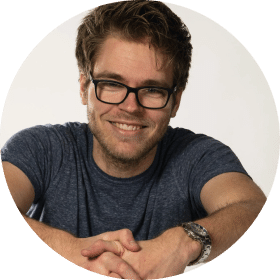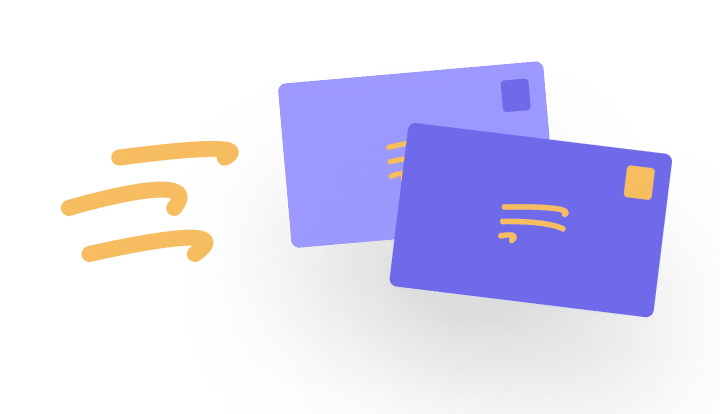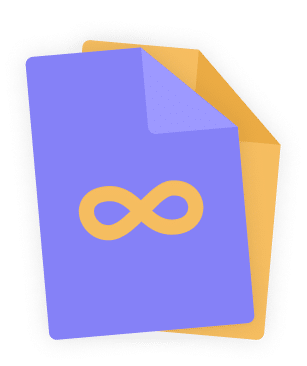So you’ve landed an interview for a job as a UX designer. That is great news. Congratulations! You’re getting closer and closer to your new job. Here’s how to prepare for a UX interview.
- Updated on August 14, 2022

We’ll divide the preparation of your UX interview into three groups. These are before, during, and after your interview. All of these require a different way of preparing and because of this, we will provide you with tips and tricks for each of them.
Let’s not wait any longer. Here we go!
Table of Contents
What to prepare before the UX interview
If you want to ace your UX job interview, preparation will be the key to your success. There’s a lot you can do to prepare. That’s because most job interviews follow basic patterns. You can learn these patterns.
One of these patterns is the introduction. You’re going to have to introduce yourself. Make sure you know how to do this. Have a short pitch ready. In a way, this could be similar to the about you section of your resume and portfolio. You can reuse your backstory. It is what makes you stand out.
Another way to prepare for a UX interview is to research the company and meeting participants. Companies want to hire people with passion and interest in the company. Show you’ve prepared yourself for the interview. Even if you’re just there to get the job.
One way you can do this is by preparing some questions. During every interview, there will be a moment where you’re asked if you have questions. The worst thing you can do is answer that you do not.
Another thing that works well is to see if you have common interests or similarities with the other participants. If you do, try and bring that up in a casual way. It will help break the ice.
During the interview
Now that you’ve prepared for your UX interview, it is time to go to the meeting. There are a few things you absolutely have to do to get a good result from the meeting.
One of them is to be on time. This shows your sense of time and reliability. Prepare for your UX interview by looking up the interview location. If your interview is remote, make sure you know the time and that you’re able to log into the right applications.
Try and have a good posture without forcing it. Look alive! These are just basic rules for any formal meeting. They apply here as well.
Most UX interviews follow a certain playbook. It consists of a few parts. You’ll be more at ease when you know what these parts are. They are as follows.
- Introduction. You’ll be able to introduce yourself just like we’ve discussed before. The goals and way-of-working for the meeting are being discussed as well.
- About the company. During this part of the UX interview, the participant from the company will explain what the company does and who they are looking for. You’ll be able to ask questions here.
- About you. This is where you can tell the company more about yourself. If you were required to bring your portfolio, this is the moment to present one or two of your case studies to show how you do your work.
- Ending. You will have another chance to ask questions at the end of the interview. In most cases, these questions will be about the company and the next steps for the interview.
As you can see, each part has its own moment for you to present or ask something. Make sure you’re prepared to do so during your UX interview.
After the UX interview
You could say that the period just after the UX interview is the most difficult. The interview went well and you just want to know what is going to happen next. We get that!
Sadly, there’s no default next step. We’ve seen interview results come in just minutes after the interview. In other cases, it took over a month before the interviewee received the interview outcome. Your chances will be limited if it takes a long time for your company to get back to you.
Depending on the company recruiting process you might have to come back for a second UX interview or work on a case to show your design skills in practice. At other companies, an offer might come in right after your first meeting.
One thing we’d like to recommend is to try and be patient. You don’t want to come across as desperate. That’s bad for your chances. Also, always try and have multiple interviews with different companies at the same time. You’ll increase your chances of landing a job. It will also take less time.
Further reading
That’s what we believe to be the best approach to interviews. How to prepare for a UX interview is sometimes personal but there are also a lot of best practices and unspoken rules to apply.
This is one of the final steps if you want to get a job in UX. If you ace your interview, all that’s left is the salary negotiation. More on that later!

About the author
Hi! I'm Nick Groeneveld, a senior designer from the Netherlands with experience in UX, visual design, and research. I'm a UX coach that supports other designers and have completed design projects in finance, tech, and the public sector.
☎️ Book a 1:1 mentor meeting or let's connect on LinkedIn and Twitter.



